For Years She Healed the Stars—But Now Cancer Is Forcing Esther Lee to Take Care of Herself
This story was originally published on May 17, 2022. It was included in a year-end list of SI’s best stories of 2022.
After she learned she was dying, Esther Lee had to make some calls. She spoke with Venus and Serena Williams, her brother and her sister, her friends and some other clients. One of the last and most difficult was Shaun White. Esther was standing in a field in the heat somewhere in Los Angeles in late July 2020. He answered quickly, excited to hear from her, but then she told him her news, and he started crying.
Over the first half of the year, Esther had lost her appetite, her abdomen swelled, she struggled to breathe and she was always tired. That July, a series of tests and scans revealed a tumor the size of a cantaloupe in her abdomen, with additional lesions on her lymph nodes, liver and the bones of her spinal column.
She had Stage IV pancreatic cancer.
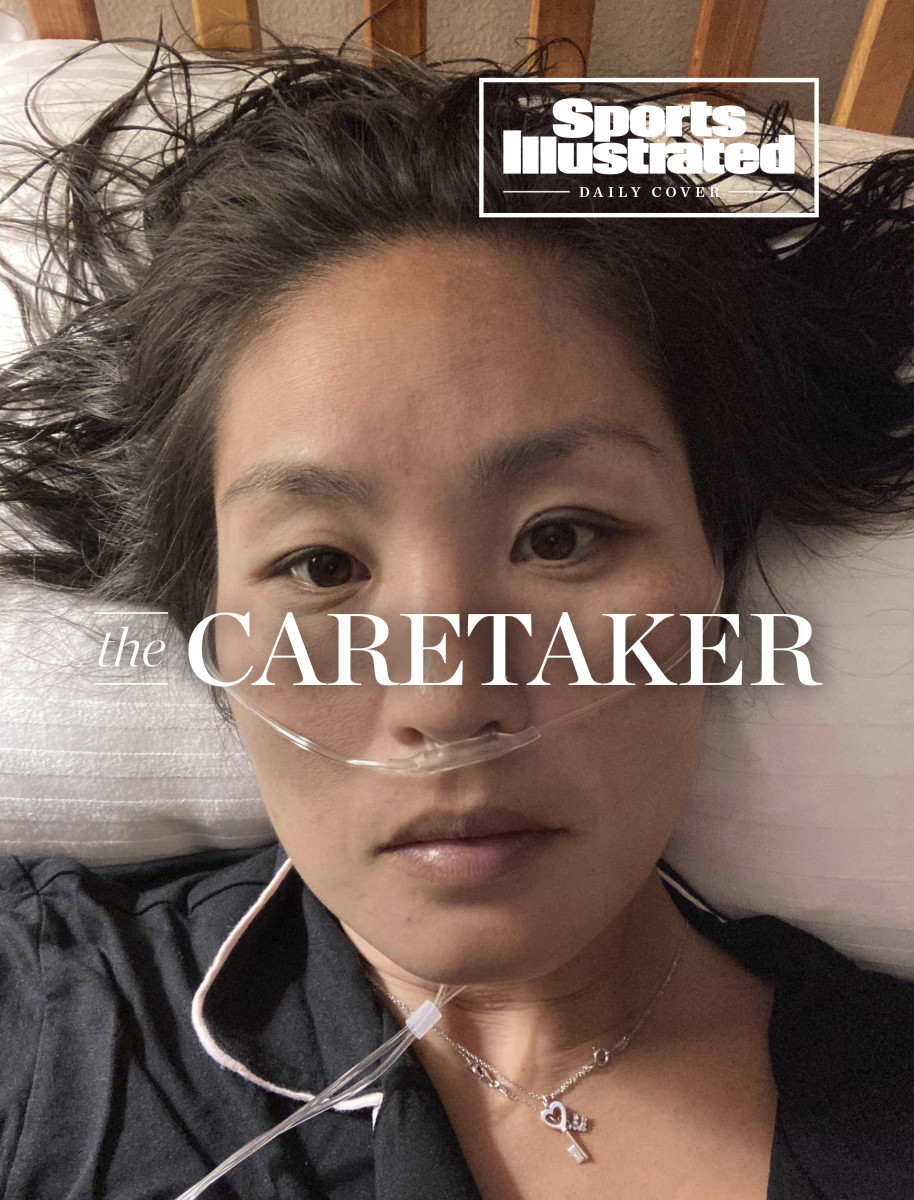
Esther and White cried together on the phone. They told each other they loved each other. “‘What’s next?’” White recalls asking. “Is there hope? Can I dare to hope?”
Esther wasn’t sure. Her grandmother had died years earlier, two weeks after receiving a similar diagnosis. The five-year survival rate for Stage IV pancreatic cancer is 1%. The life expectancy, three to five months; the average patient lives for one year. Esther’s tumor was five times larger than the average pancreatic cancer tumor.
So, Esther thought, Is this what it feels like when you’re about to die?
A Los Angeles–based physical therapist, Esther, 44, was well known among many prominent clients and celebrities, a ball of life and wide-open with friends, always making everybody laugh. When it came to members of the media, however, Esther fiercely guarded her privacy.
I first met her in the cold and the snow of a Colorado mountain in the fall of 2017. We were at the bottom of the Breckenridge superpipe watching White practice. I was covering his quest to win a third career gold medal at the ’18 Winter Olympics in PyeongChang after failing to medal in Sochi in ’14.
Esther was wrapped in several layers of clothes, wearing a hood over a toboggan over a ski mask. I could see only her eyes, brown and smiling. She was White’s personal physical therapist, but also more; White told me she’d changed his life. Her work apparently went beyond muscle and tissue, and into matters of the soul.
She was quiet at first, but then we moved past small talk, and she spoke passionately about identity, purpose and spirituality. Gentle, thoughtful and warm, she laughed seemingly every other sentence—sometimes the topics were absurdly deep for the situation; other times, she just seemed happy to be alive.
She felt she was exactly where she was supposed to be. “I’ve just always been a caretaker,” she says. “Especially with Shaun.”
In Breckenridge, White was wading through the spiritual gap between pain and finding peace. He and Esther had watched Jim & Andy: The Great Beyond, a documentary film about Jim Carrey’s existential crisis while filming Man on the Moon, a movie about comedian and provocateur Andy Kaufman, who died from cancer at a young age. Carrey says he felt he became Kaufman. Some of Kaufman’s family experienced catharsis visiting Carrey during that time, as though having spent time with Kaufman himself.
When filming wrapped, Carrey became depressed upon becoming “himself” again, not sure what that meant anymore. Reflecting later, he said that in seeking Hollywood success, he’d inadvertently created a version of himself that was like a character absorbing his soul. “At some point,” he said, “when you create yourself to make it, you’re going to have to either let that creation go, and take a chance on being loved or hated for who you really are—or you’re going to have to kill who you really are, and fall into your grave, grasping onto a character that you never were.”
This haunted White because Carrey articulated a feeling White hadn’t yet fully understood: He’d been playing a role all his life, too, typecast in commercials and movies as this goofy snowboarder bro. He struggled with how most people never expected more of him, but in trying to break out of that over the years, he’d made mistakes that hurt others and himself.
“I’ve learned,” he said back then, “to just be kind to myself.”
Esther was a big reason why. She was helping him let go of who he thought he should be so he could just be himself. “She came along at the perfect time,” he says.
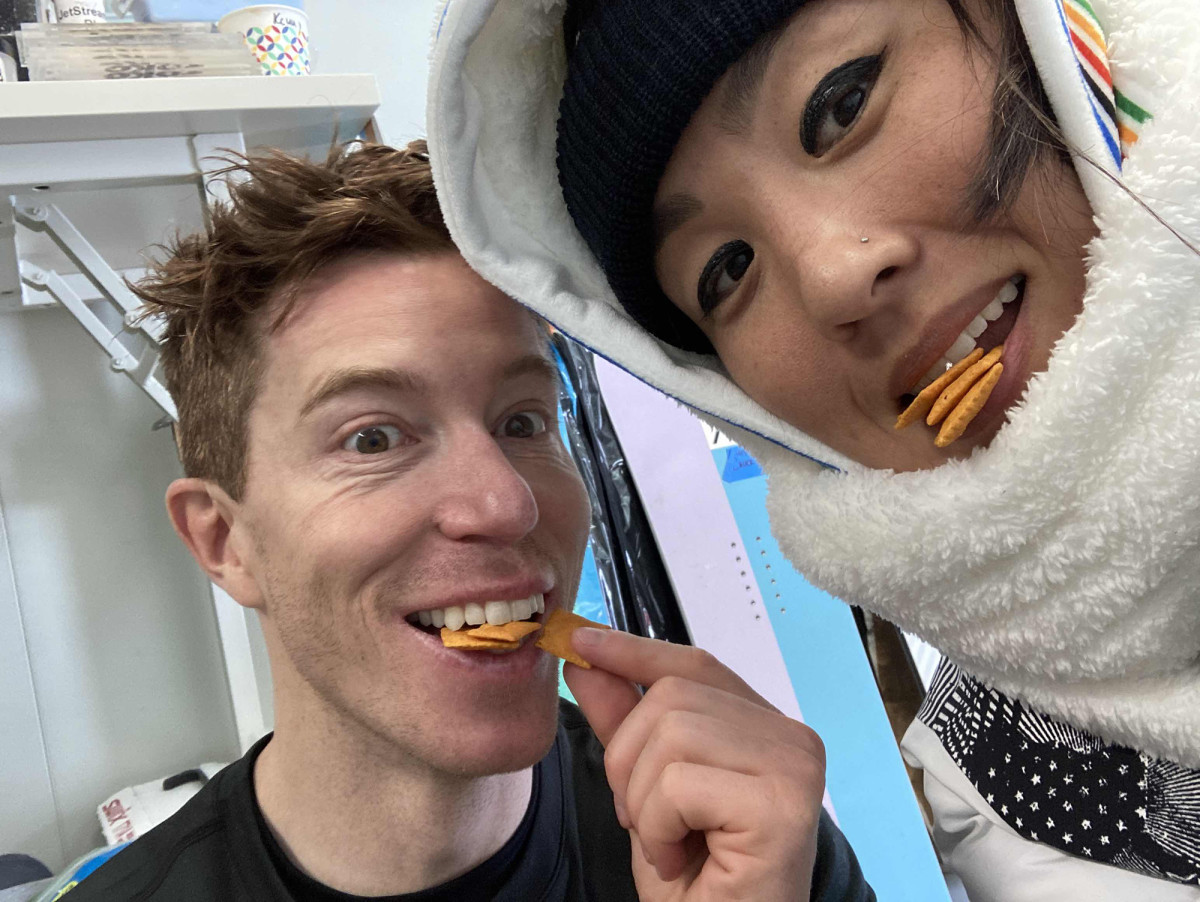
More than a decade ago, back in 2009, Lee was 30 years old and well established in her career, doing physical therapy with a private practice in Los Angeles. One day, one of her clients turned out to be Serena Williams.
In their first session, Serena says, “I immediately fell in love.”
For Serena, Esther’s technique as a therapist was ideal. “I needed it to be a little stronger than average,” Serena says. “And she was just that.”
Esther’s philosophy is to let her patient’s needs guide her care, rather than follow prescribed treatment methods based on a diagnosis. “The body is so complex,” she says. “And treatments need to be very specific.” She shies away from standardized modalities and instead simply searches out exactly where the problem lies and all that contributes to it.
“If someone has knee pain, you can’t just focus on the knee,” she says. “You have to look at the whole body as a system … hydration, nutrition, their digestive health, their mental health. Everything is so involved with the way our bodies feel. Our bodies are an impressive bundle of systems working together.”
Then, as a human being, “She’s an amazingly sweet person,” Serena says. “And she has a great personality. She’s just really nice—the soul of her being is nice. There’s nothing bad you can say about her.”
By the end of their first session, Serena wanted Esther to join her and Venus full-time. “Literally asked her on the spot,” Serena says.
Not long after Esther began working with the Williams sisters, Serena was hospitalized for blood clots and a pulmonary embolism in wake of ankle surgery. Esther slept in a chair beside her hospital bed. “She never left my side,” Serena says. “And I never asked for that. That meant a lot to me. … She is such a caretaker. And beyond anything that I’ve ever seen, beyond anything you could write in a job description.
“There is no job description for Esther.”
Esther worked with the Williams sisters for the next six years. “A wonderful, wonderful therapist,” Serena says. “So good at what she was doing, and always taking different courses and learning more and more and more, and just wanted to make sure that she was the best she could be.”
In six years with Esther, from 2009 to ’15, Serena won 12 Grand Slam singles titles: the French Open twice, the Australian Open three times, the U.S. Open three times and Wimbledon four times. She also won the gold medal at the ’12 London Olympics. Together, the Williams sisters also won six major doubles titles: the French Open once, the Australian Open twice, the U.S. Open once and Wimbledon twice. They also won doubles gold at the '12 London Olympics.
“You’re only as good as your team,” Serena says. “And she was a big, big, big member of our team. And basically our family, and our lives.”

Life with the Williams sisters had been a dream, traveling the world for a job with the best in the game. But by 2015, Esther wanted a different lifestyle. With her 30s racing by and 40 around the corner, she wanted a family someday and longed for more time for herself. She told the Williams sisters she’d be happy to continue treating them in Los Angeles, but it was time for a change.
She got a Maltese poodle and named him Ollie, and started looking for new work opportunities when Shaun White’s assistant approached her about working for him.
“I was in a bit of a state,” White says. “I was feeling really frustrated after Sochi.”
He’d failed to medal at all, finishing in fourth place. He was angry with himself, making dramatic changes to every area of his life as both an athlete and a human being. His entire body was starting to experience the general wear and tear that comes from being an elite athlete. Until that point in his career, White never had a personal physical therapist.
Esther drove to White’s home in Hollywood for an initial session; they immediately clicked. Beyond the treatments, they took group hip-hop dance lessons together and whenever White took her to the mountains, she’d go snowboarding with him, loving the sport. In 2016, White underwent surgery on his ankle that, combined with her treatments, would prove restorative.
But Esther identified other pain he carried, a soul also bearing figurative scar tissue. He doubted himself as a snowboarder and a human being, stumbling through an intentional quest for peace and joy. Among other things, he was grappling with the sexual harassment lawsuit filed against him in 2016, struggling to understand the events that led to it while also still growing from it. He recognized that one root of his issues was being unkind toward himself.
He was still working on that, too, particularly in how his insatiable ambition made him obsessive and unforgiving of himself. Back in 2017, Esther told me, “He always wants to improve and wants something bigger and better, which I get. That’s why he’s accomplished some amazing things. … But he was in this mentality where he was just never satisfied.”
He did that with competitions, businesses, boards, medals and everything else in his life. They were having a session at his house in Malibu, watching the sun set over the Pacific, when White kept talking about the next house he wanted to buy and how he wanted to decorate it.
Esther identified this as an echo of how he approached everything in life: In a gorgeous cliffside Malibu beach house, all he could talk about was his next property. “You have all these amazing things that you worked so hard for,” Esther told him that day. “Just enjoy the things that you have already.”
He took it to heart. They talked about setting boundaries with himself and learning to recognize the difference between the things he wanted to do versus the things he felt like he should do.
“She became just this dear, dear friend,” White says. “She had this great outlook on everything. She was the one I’d go to for advice on career, relationships, you name it—anything.”
“Being on the road all the time like we are, doing such intimate work, you really become like family,” Esther says.
Along the way, Esther was a caretaker in every sense. She picked up groceries, returned rental cars, ran back to the cabin if White forgot something he needed on the mountain. “She was the glue holding the whole team together,” White says.
“That’s just how I’ve always been,” Esther says. “It’s always been important to me to take care of other people.”
White went on to qualify for the 2018 Olympics with only the third perfect 100 score in snowboarding history. In PyeongChang, he won gold again in thrilling and dramatic fashion. He took the next season off. Esther spent the next year and a half working with musicians and action movie stars. “Everyone discovered what I’d already found,” White says.
But Esther was about to have to relearn everything she’d been teaching White—she was going to have to follow the message from Jim & Andy. She didn’t realize it yet, but she had also created a character for herself, and she would soon face the choice between letting that character go—or falling into its grave.

At first, in the days that followed her cancer diagnosis in July 2020, Esther was more energized, ready to do what needed to be done as quickly as possible. For instance, when her doctors scheduled her surgery for two months later, she pressed until they changed it to an earlier date. “You’re really a go-getter here,” they said, laughing, which confused her. “I just want to get things done,” she says. “I have cancer in my body, and it’s growing. You want to ask me to wait two months for surgery? I want this thing out of me.”
One cause for hope: her tumor was found to be of the "neuro-endocrine" variety—still just as deadly but less aggressive. Even still, soon, her condition deteriorated. She couldn’t eat, lost weight, developed severe back pain and couldn’t sleep. She struggled to even lie in bed without pain.
Surgery removed her tumor in August 2020. Her spleen came out with it. Complications in her lungs required additional surgery. Simply breathing became a challenge; doctors put a catheter in her lungs, which delayed radiation, the most effective treatment for pancreatic cancer.
Esther felt so much pain that she needed an epidural that included a catheter for a morphine drip in the hospital, followed by significant quantities of oxycodone at home.
As she started oral chemotherapy in November, she felt sick just reading the list of possible side effects. This is ridiculous, she thought. Anything goes on chemo. Mouth sores. Organ failure. Nausea. Hair loss. She had intrusive thoughts about all of her hair instantly falling from her head. As she held her first pill, her hands shook. Once I put this in my body, she thought, who knows what’s going to happen next?
Nausea came on quickly. Eating started to hurt. Her appetite vanished. She lost more than 25 pounds in a month, causing doctors to worry that she would become too weak to endure treatment. To regain weight, she forced herself to eat, no matter how bad it felt.
Psychologically, losing her hair was the hardest part. All her other suffering felt invisible, but then she began waking up to small piles of hair on her pillow and discovering clusters of it around her house. She found herself constantly vacuuming it up, which was physically taxing and psychologically painful. She cut her hair short, from flowing down to her waist to tight above her shoulders. She tried to be grateful that she lost only about 60% of her hair.
Soon, she could do nothing but lie in bed or sit in a chair. She had helped three all-time legendary athletes become the best at their craft and world-famous performers entertain millions. She grew up in love with sports, playing volleyball, softball, floor hockey, soccer, running cross-country, and competing in various track and field events. She’d gone to Northwest University in Kirkland, Wash., on a volleyball scholarship. She fell in love with snowboarding while in college. She loved to hike, to exercise, to dance. She had scaled mountains.
Now, she spent entire days watching a clock.
Oh my God, is this really what my life has come to? she thought. Just day after day of sitting here, not being able to do anything for myself? This is all I can handle?
“I was just trying to get through the day,” she says. “Get through the pain. And I just felt useless.”
She asked her sister to take her dog, Ollie, because she couldn’t handle the psychological stimulation of his energy, and she lacked the strength to walk him. Esther made her sister promise to adopt him if she died.
Her body grew stiff from top to bottom, as if every bone had arthritis.
Her emotions became overwhelming. Every headache made her think the cancer had reached her brain. Every chest pain made her fear for her heart. She worried that the cancer in the bones of her spine would spread to the nerves and create debilitating pain.
“I was getting so paranoid,” she says. “It’s just hard not to be paranoid.”
Then a chaplain told her to reframe her paranoia in a different way. “Why not just say you’ve become concerned?” he said. “It’s O.K. to be concerned about the symptoms that you feel. You don’t have to call it paranoia. You’re not being kind to yourself if you say it that way.”
She realized she was angry at herself. She had to learn the same things she’d helped White learn years earlier: “I had to be more kind to myself.”
She saw more work to do on herself, same as she’d done on White.
Her soul had some scar tissue.
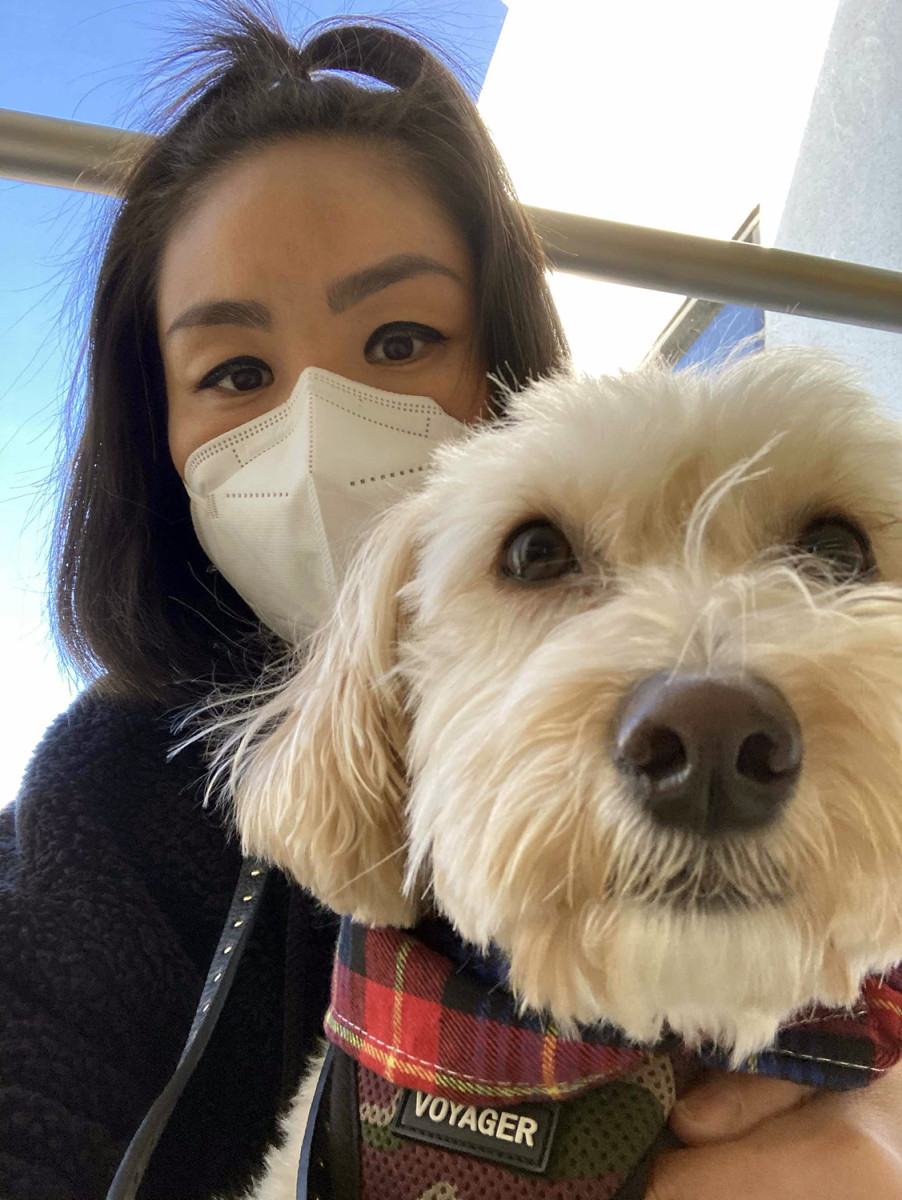
She’d filled her life with work, travel and being a great caretaker—all good and healthy pursuits in their own right, but also brilliant distractions from her own pain. “I was really good at keeping myself busy,” she says.
She spent her adult life giving people the care she wanted as a child; her work and travel had been like a dam built to hold back a river of pain. Now the dam was broken.
As a child, Esther experienced ongoing emotional abuse and witnessed further physical abuse. Playing sports took her away from it; overachieving was a form of escape from her internal life. Nobody ever taught her to take care of her own heart. “I grew up pushing away certain emotions I was taught were negative,” she says.
Emotions such as anger, disappointment, sadness, pain and fear all felt off-limits. “If I came home with an injury, I’d get such a different response than like what you’d hope, which is to be comforted and embraced. … I would maybe even get in trouble,” she says.
Now, her cancer forced her to feel everything.
When she finished chemo and scans showed the cancer just as prevalent as before, she broke down in tears. I went through all of that chemo, she thought. “Not that it was for nothing,” she says. “It bought me time. But I was like, Wow, I really didn’t do too much.”
She began to realize she was probably never going to be a physical therapist again. “My job is so physical,” she says. “I can’t.”
She had long, deep conversations with her chaplain, friends and family. She listened. She read books like The Untethered Soul, which taught her to listen to her own, kind voice, instead of the abusive voice that had long ruled her mind. She learned.
“All emotions are important for us to learn how to embrace in life,” she says. “And I think when you learn how to handle the negative emotions, it makes you feel—ironically—more alive.”
And she dared to hope.
In January 2021, a Zoom webinar through the Hirshberg Foundation for Pancreatic Cancer Research, a nonprofit based out of UCLA, introduced Esther to three pancreatic cancer survivors who were 10, 20 and 30 years out from diagnosis. “So encouraging,” she says.
Between that and later, when Serena made a video asking her fans to support Esther as the foundation’s annual 5K’s honorary starter, Esther realized how much her story could help people. Her treasured privacy suddenly felt selfish.
The character she once was, the quiet, private caretaker always behind the scenes, needed to die.
“It’s made me realize that if I can help anybody else be inspired, I want to do it,” she says. “I’ve gone through a lot of mental challenges through my journey with cancer, and that’s been the hardest part, getting through the mental part of it. If I can help, I am so happy to share my story, and to share the lessons that I’ve learned along the way.”
She began grueling rounds of a new form of radiation treatment called peptide receptor radionuclide therapy (PRRT). It was approved for use in the U.S. only four years ago.
Sometimes, she missed her old life. It had been beautiful. But she was finding beauty in this new life, too. “People think that they find their purpose and they’re going to do it for 40 or 50 years,” she says. “But maybe sometimes your purpose changes. Maybe sometimes your purpose is only supposed to last a few years.”
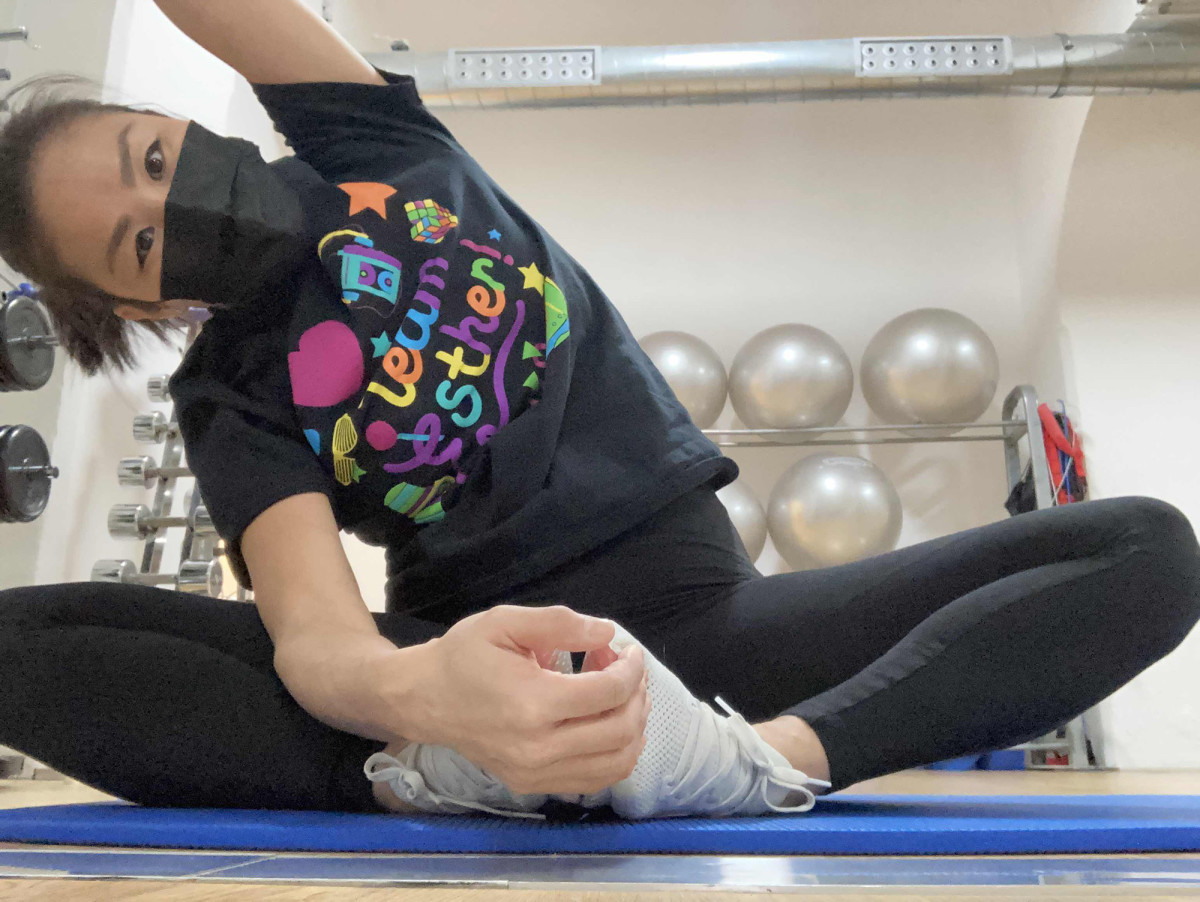
In February 2021, as Venus Williams was passing through L.A., she asked Esther whether she could visit. Esther said of course, and then she had an old, familiar impulse: “I’d love to help you get back on the court.”
Earlier that week, at the Australian Open, during a volley near the net, Venus stumbled and landed awkwardly, injuring her ankle and her knee.
“God, you’re crazy,” Venus said in delight. “Are you sure?”
“I don’t know if I actually can right now,” Esther said, “because I’m stuck in bed right now. But I’d love to try.”
Venus limped into her house. Esther was too tired to stand. As Venus lay on her therapy table, Esther used a rolling stool to do her work. Her hands felt strong. When they were finished, Venus left without a limp.
Esther was exhausted. “I did push myself a little too much,” she says. “My hands were so swollen and sore. But it made me so happy, just to feel useful again.”
As tired and sore as she was, she also felt something electric in herself she hadn’t felt in a long time. A few days later, when Shaun White called to check on her, Esther giddily told him she’d just done a treatment. White got so excited that Esther asked whether he’d like her to treat him again, too—she knew that White was starting to train for the 2022 Beijing Olympics, and she wanted to help him get there.
“Are you sure?” White asked.
“I don’t know how much energy I have,” Esther said, “but I can try.”
Esther continued to try, canceling sessions when she needed to rest and offering more when she felt she could. In between, she had scans to check on her cancer every few months. After seeing her results in July and then again in October, “my doctors were really happy,” Esther says, “but I was very disappointed.”
The cancer remained throughout her spine, liver and lymph nodes. Esther cried. But her doctors celebrated: The cancer wasn’t spreading. Some lesions even shrank by a couple of millimeters.
“My measuring stick is still just so much different than everyone else’s,” Esther says, laughing at herself. “With cancer, it’s a whole different monster. They were thrilled that it hasn’t grown or spread. So I’m still learning to deal with this new monster.”
“I’ve just been learning to live my life no matter what my scan says,” she says.
The scans in October coincided with the start of White’s training ramp-up and grueling travel schedule ahead of the Beijing 2022 Olympics, which included trips between Laax and Saas-Fee, Switzerland, Copper Mountain, Colo., and Mammoth Lakes, Calif. Esther faced a harrowing decision.
Her doctors approved the trip to Laax, with necessary requirements: wheelchair assistance in the airports, an inhaler for her lungs. There were moments when she wondered whether she should go back home, paranoid—no, concerned—that she was making her condition worse. Sometimes she would slip into her old caretaker mode trying to go get groceries, clean the kitchen or run an errand. She’d find herself halfway through a task, get exhausted, then carry on, anyway. “We had to have real heart-to-hearts,” White says.
At night, in her room, she’d cry, releasing tears she’d held back all day, exhausted and afraid she was pushing herself too hard. But she pressed forward—White needed her.
“I felt useless for so long,” she says. “To feel useful again—and to feel needed again—was such a turning point for me.”
It wasn’t until she was standing on the snowy mountains at the Olympics in Beijing—a year and a half after diagnosis of a cancer that kills many of its victims within a few months—that Esther realized that as exhausted (and concerned) as she’d been feeling along the way, she also felt better than she had in a year. The work and travel she worried was hurting her may have actually been saving her.
“I think it exponentially healed me physically,” she says. “It’s done wonders, just being around [White], being around the high level of physicality, and to be around my friend again. … I’ve just been in tears every day because I’m so grateful. … I’ve told him multiple times along the way, ‘I need you just as much as you need me.’
“I realized that’s what life’s about. It’s not doing it on your own. But really needing each other.”
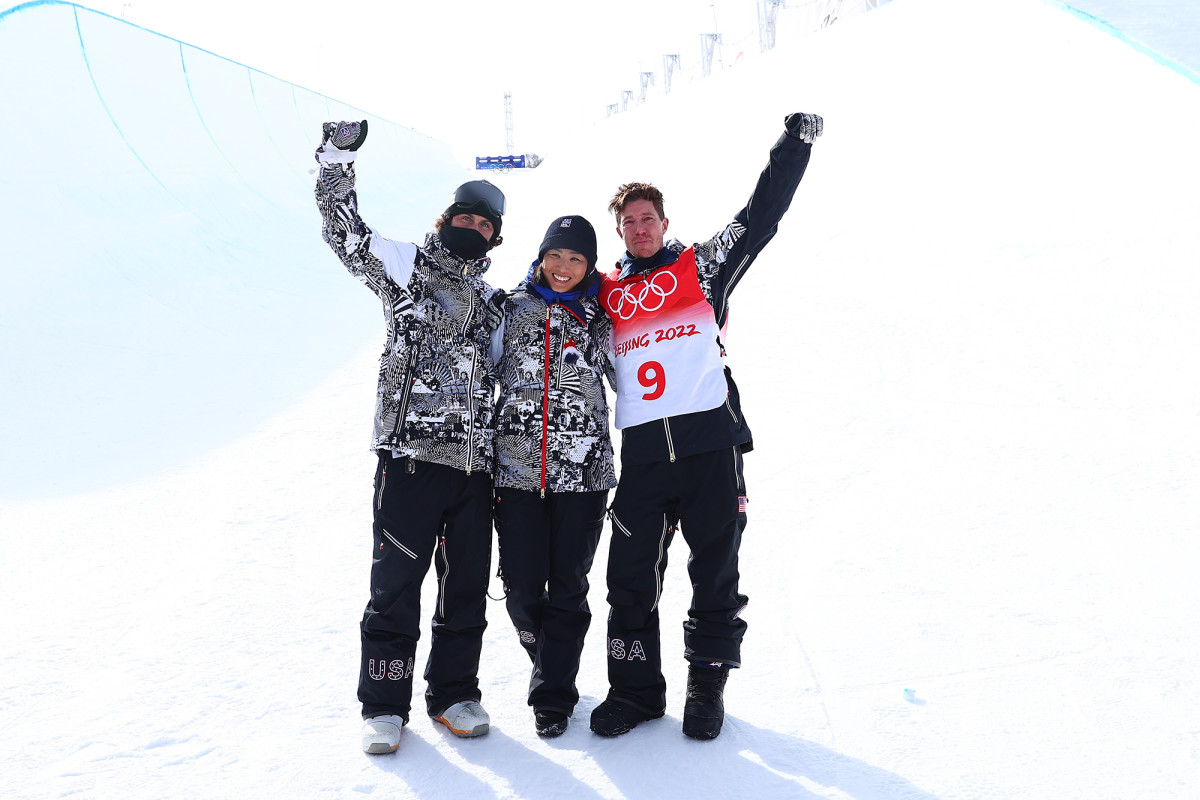
I saw Esther again in late March 2022, four and a half years from the first time we met, and this time she wasn’t covered by countless layers, or even a mask. We got juice from a spot near her place in the Valley on a warm Los Angeles afternoon. She wore sneakers, leggings and a green T-shirt. She looked and sounded strong, stronger than when I’d spoken with her in Beijing.
“I feel like I have a bonus life,” she says. “I shouldn’t be here. So it’s given me such a whole different coating of life. I see things so differently.”
She spends most of her time at her home in the Valley. She reads, sits on her patio, listens to music and watches Ollie chase squirrels—she got him back not long ago. Her backyard is a vivid scene. Yellow lemons. Green grass. Blue sky. Turquoise pool. “There are so many colors,” she says. “They look so bright.”
She writes a lot—in a journal, working on a book and typing letters to people she loves using a genuine Brother typewriter. She loves the sound of it.
The other day she took Ollie to the beach in Santa Monica after a vet appointment, letting him run around in the sand before the wind kicked up, and they headed back to the car. Suddenly cold, Esther began to jog.
“I was so happy,” she says. “I haven’t been able to jog since my diagnosis.”
She laughs and says, “I mean, it wasn’t really a jog. But it was lifting my feet off the ground.”
Editors’ note, May 17 at 3:15 p.m. ET: An earlier version of this story misstated a few details about Lee's medical treatment. The article has been updated to reflect Lee's experiences.
Read more of SI’s Daily Cover stories:
• The Return and Rebirth of the WNBA’s AD
• Does the NBA Have a $@&!*% Problem?
• Sicilian Scrum: One Italian Rugby Club is Standing Up to the Mafia
